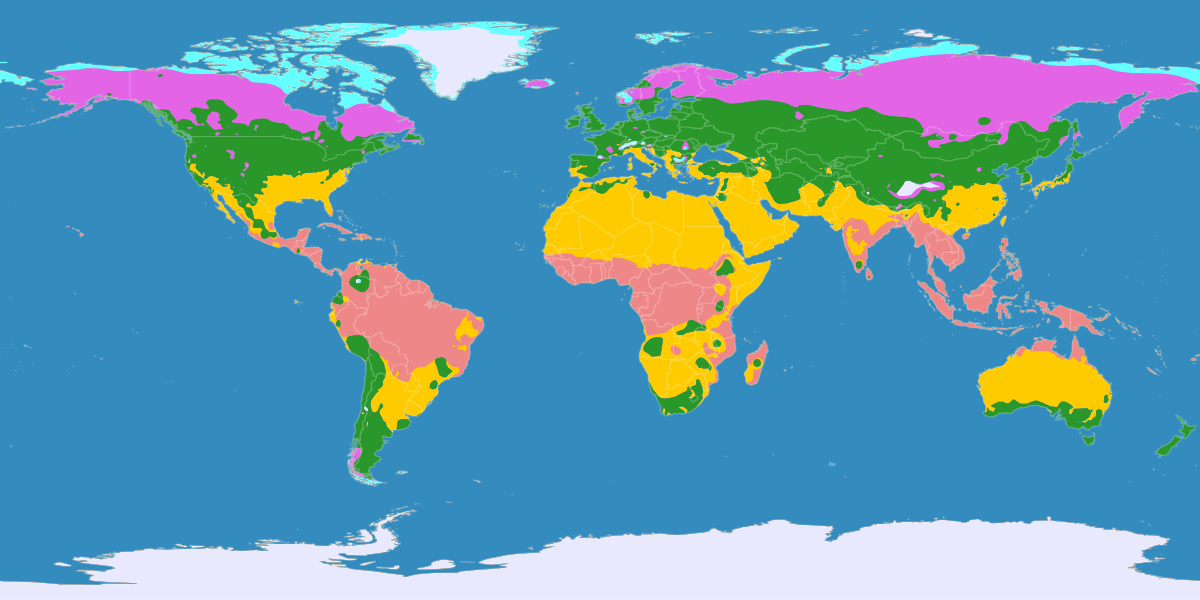Climate zones
Climate zones are geographic areas on Earth that share similar climate characteristics, including temperature, precipitation, and other meteorological factors. There are five main climate zones, which are defined based on latitude and climatic conditions:
Extremely warm zones (tropical zone):
Definition: These zones are located near the equator, between the Tropics of Cancer and Capricorn. They are characterized by high temperatures throughout the year.
Distribution:
Tropical humid zone: These areas have high temperatures and high humidity throughout the year, accompanied by frequent rains and a humid climate.
Tropical Dry Zone: High temperatures and low humidity prevail in these areas. Depending on the specific location and climatic influences, there are dry and rainy seasons.
Subtropical zones:
Definition: These zones are between the tropics and temperate zones, near the Tropics of Cancer and Capricorn.
Distribution:
Subtropical Dry Zone: These regions have high temperatures and low humidity, with minimal rainfall and an arid climate.
Subtropical humid zone: They are characterized by warm temperatures and humidity. Precipitation can be seasonal or year-round.
Temperate zone:
Definition: These zones are located between the subtropical and polar zones.
Distribution:
Continental temperate zone: This type of zone has distinct seasons with changes in temperature and precipitation. Temperatures are warmer in summer and colder in winter.
Oceanic Temperate Zone: In these regions, temperatures are moderate and the seasons are less pronounced due to the influence of the ocean. Precipitation is sufficient and evenly distributed throughout the year.
Cold zone:
Definition: These zones are close to the polar zones and are located between the temperate and polar zones.
Distribution:
Boreal zones: Characterized by a cold climate and mostly coniferous forests. Winters are long and cold.
Central European zone: This zone is centered on central Europe and has cooler winters and warmer summers.
Polar zones:
Definition: These zones are closest to the pole and have extremely low temperatures and a short summer season.
Distribution:
Arctic Zone: Located in the north of the Earth and includes the Arctic. Extremely low temperatures and long winters are characteristic.
Antarctic Zone: The zone covers Antarctica and has similar characteristics to the Arctic Zone, with even more extreme conditions
The division of climate zones is fundamental to understanding climate patterns on Earth and has a significant impact on vegetation, the environment, and human settlement in various parts of the world.

